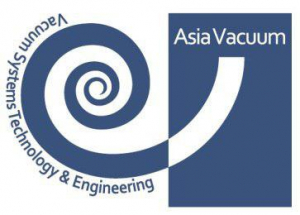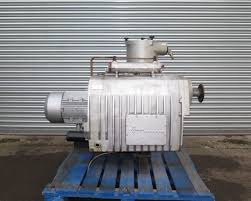Introduction to a Liquid Ring Vacuum Pump
Introduction to a Liquid Ring Vacuum Pump
Picture1Usually, a liquid ring vacuum pump is used as a rotating positive displacement vacuum pump but it can also be used as a gas compressor compressing gases to pressures above the atmospheric. As far as function, liquid ring pumps have similarities with a rotary vane pump but differences are crucial for achieving highest reliabilities and trouble-free operation. For instance, a liquid ring vacuum pump is designed with the rotor as being the only moving component. There are no metal-to-metal contact within the pump, no valves, no sliding vanes, no need for lubrication (other than outboard mounted bearings). The water provides the sealing while acting as the compressing media within the pumping chamber. Compression is isothermal with very little temperature rise during compression, low noise without silencers, low vibration, cool and safe operation.
How a Liquid Ring Vacuum Pump Works
Using some form of liquid (usual water), which is also referred to as sealant, compression is achieved as soon as pump is started and vacuum is created. Before the pump is started, there needs to be some liquid sealant inside, some of the sealant is discharged with the gas being pumped, the same amount of liquid must be replenished or sent back to the pump after it has Picture3been cooled. Based on the exact application, sealant can be water, solvent, oil or other liquids. Once the pump has been started, the sealant is slung by the impeller using centrifugal force to the outer walls of the body. With this, a ring of liquid is formed.
As mentioned, the impeller is eccentrically mounted within the pumping cylindrical casing, because of this some blades are almost out of the liquid ring while others are completely submerged. The volume without any liquid sealed between the liquid, Picture2impeller hub and impeller blades is occupied by the gas to be pumped away. As the impeller rotates the liquid begins to recede from the center hub serving as a piston drawing gas in, continuing with the rotation the impeller blades go deeper into the liquid ring thus impeller cells (pistons) compress the gas until discharged through the strategically placed discharge port. This action creates the liquid ring vacuum pump’s suction that draws in gasses and vapors through the inlet port. The outcome is compression. Gasses and a certain amount of liquid are exhausted through the discharge port to atmospheric or even higher pressure. Because some liquid sealant is discharged along with gases the same amount of liquid must be replenished or sent back to the pump after it has been cooled.
Getting Professional Assistance
As with all equipment, there are times when a vacuum pump needs to be serviced.
The professional team at Premier Fluid Systems is highly qualified for handling repairs and it is important to remember the Picture5team can
provide assistance with installation as well as start-ups

